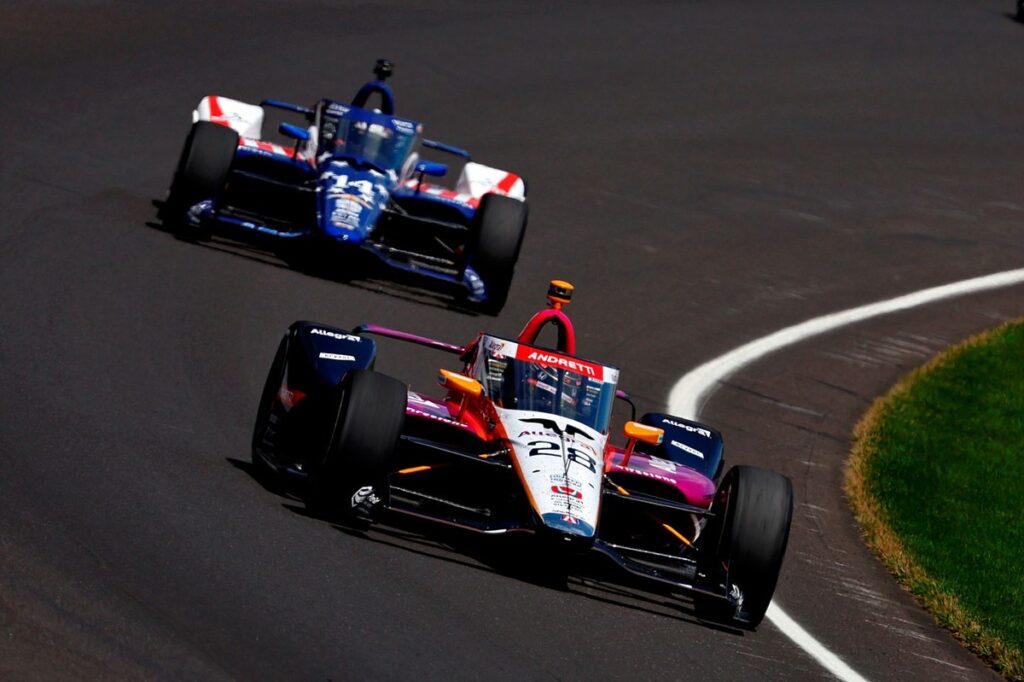Post-Race Controversies Shake Up the Indianapolis 500 Results
The 109th running of the Indianapolis 500 proved to be one of the most unpredictable in recent history, not only because of the intense racing but also due to post-race technical disputes that have significantly altered the final standings. Following the event, two vehicles from Andretti Autosport and one from Prema Racing failed to pass mandatory post-race inspections, sparking widespread debate and regulatory scrutiny.
Disqualification of Key Competitors and Technical Violations
On Monday, IndyCar officials announced that the cars driven by Kyle Kirkwood (#27) and Marcus Ericsson (#28) from Andretti Autosport, along with Callum Ilott’s (#90) Prema Racing entry, did not meet the technical standards required after the race. The primary issue involved unauthorized modifications to critical aerodynamic components, specifically the “Dallara-supplied Energy Management System (EMS) covers” and the “cover-to-A-arm mounting points.” These alterations were found to include unapproved spacers and parts, which IndyCar confirmed could have provided an aerodynamic advantage, thus violating the series’ regulations.
In addition to the Andretti Autosport entries, Prema Racing’s No. 90 car was flagged for non-compliance related to the front wing. The team failed to meet the minimum height and positional specifications for the left endplate, a crucial element designed to ensure safety and fairness. The rules stipulate that wing components, including flaps and mainplanes, must remain within designated areas to prevent aerodynamic advantages.
Impact on Final Race Results and Penalties
As a consequence of these infractions, all three vehicles were officially demoted to the back of the official race standings. Ericsson’s second-place finish is now recorded as 31st, Kirkwood’s sixth as 32nd, and Ilott’s 13th as 33rd. Each team was also fined $100,000, and their respective team managers and competition engineers face a one-race suspension, which will be served during the upcoming Detroit Grand Prix.
The series’ decision to relegate these drivers has significantly reshuffled the race’s outcome, affecting championship points and team standings. Such penalties underscore IndyCar’s commitment to maintaining strict technical compliance and fairness across all competitors.
Team Responses and Future Actions
Following the announcement, Andretti Autosport issued a statement indicating they are “taking the necessary time to assess the information and will request a comprehensive review with INDYCAR.” The team has expressed a desire to understand the specifics of the violations and to ensure future compliance.
Prema Racing, on the other hand, publicly acknowledged responsibility for the infractions. The team’s statement emphasized that the wing component in question was “completely new” and had successfully passed technical loads tests multiple times during the month. They clarified that the issue did not impact the car’s performance during the race but admitted that the vehicle was ultimately non-compliant with the rules at the finish. The team is currently investigating the root cause, which could involve manufacturing or fitting errors, and has committed to implementing stricter quality controls to prevent recurrence.
The Regulatory Process and Next Steps
Under IndyCar’s established review procedures, teams have two business days from the official penalty announcement to submit a formal appeal detailing their objections and evidence. If the appeal meets the criteria, the series will review the submission, and both parties will select a neutral facilitator to oversee a hearing. This process involves presenting arguments, reviewing evidence, and reaching a final decision, which can take up to two weeks depending on response times.
This structured approach ensures transparency and fairness, allowing teams to contest penalties while upholding the integrity of the sport.
Broader Implications for the Series
The controversy highlights the ongoing challenges in balancing technological innovation with regulatory compliance in high-stakes motorsport. As teams push the boundaries of engineering, series organizers must remain vigilant to prevent unfair advantages that could compromise safety or fairness.
The Indianapolis 500, often regarded as the pinnacle of American motorsport, continues to serve as a testing ground for both driver skill and technological innovation. This year’s race, marked by unpredictable weather and dramatic on-track battles, will now also be remembered for its post-race regulatory drama, which could influence future technical oversight policies.
Key Takeaways
- Multiple cars failed post-race inspections due to unauthorized aerodynamic modifications.
- Penalties included demotion in race results, hefty fines, and suspensions for team personnel.
- Teams are entitled to appeal and participate in a formal review process to contest penalties.
- The incident underscores the importance of strict adherence to technical regulations in maintaining fair competition.
Stay Informed
For the latest updates on IndyCar regulations, race results, and team responses, subscribe to our newsletter and stay ahead of the curve in motorsport news. The Indianapolis 500 continues to be a showcase of speed, skill, and now, regulatory vigilance.

